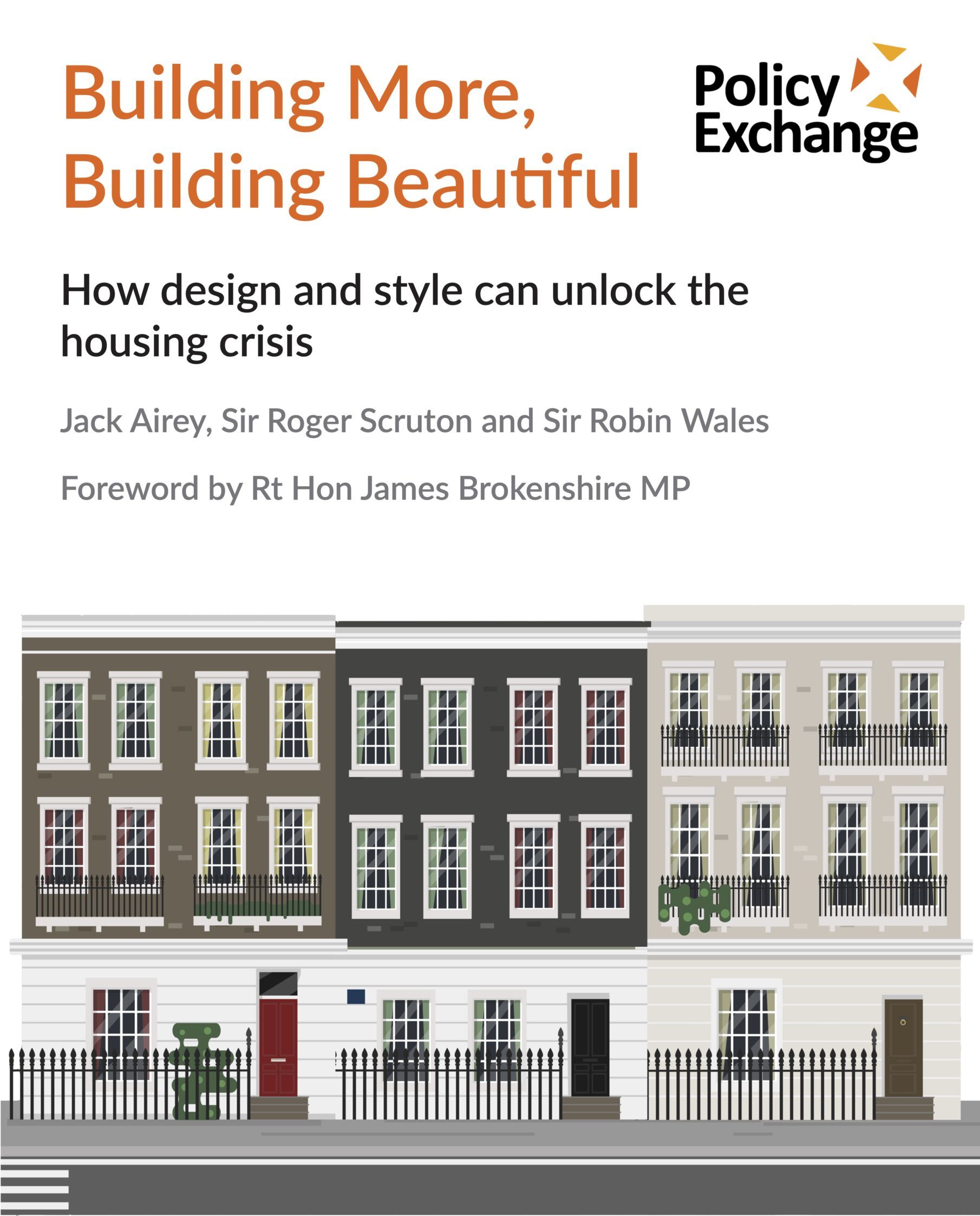
Building More, Building Beautiful
The housing crisis will only be solved if the developers of new homes place more emphasis on design and style to gain the support of existing communities, according to exclusive new polling for Policy Exchange.
Building More, Building Beautiful: How design and style can unlock the housing crisis, with a Foreword from Secretary of State for Housing Rt Hon James Brokenshire MP, shows that support for traditional design is highest among lower socioeconomic groups and that Nimbyism can be overcome if plans better reflect people’s desire for traditional building design, like Victorian terraces and Georgian blocks.
The report, co-authored by conservative philosopher Sir Roger Scruton and former Labour Mayor of Newham Sir Robin Wales, recommends how design and style should form a greater part of the planning process.
Deltapoll polling for Policy Exchange shows that:
Traditional beauty can overcome Nimbyism
- Less than three-in-ten people from London and the South East believe too many homes are being built in their area. In fact, people are generally positive about new homes, even when they are built in their neighbourhood.
- No more than one in ten respondents, wherever they live, feel new homes are currently built with good design and style and modern living requirements in mind. 41% of people believe the local community should have the most say over how we design new homes and communities in the South East – but only 3% believe they currently do. 37% of people believe developers have the most say – but only 11% think they should.
- 77 percent of respondents agree that cost is too often an excuse for badly designed, soulless new developments and 56 percent think that new modern homes are built as cheaply as possible to maximise profit for the developer. 63 percent of respondents believe that new homes can be built with good design and style and modern living requirements at the heart of the design process without spending more.
Support for traditional style is highest amongst working class communities
- 85 percent of respondents across all socioeconomic groups said new homes should either fit in with their more traditional surroundings or be identical to homes already there. Across all socioeconomic groups, a large majority of people agree that newly built homes and properties should fit in with their surroundings – with support among DEs reaching 79%.
- Lower socio-economic groups are most likely to agree that architects should build comfortable and beautiful homes, and to disagree more strongly that new buildings should be adventurous, different or seek to shock. 31% of ABs think building should be adventurous, compared to 17% of DEs.
People believe better design enhances quality of life
- 84 percent of respondents agree (with 42 per cent strongly agreeing) that better quality buildings and public spaces improve people’s quality of life – the same proportion as those who think living in a well-designed community improves people’s happiness.
- 68 percent of respondents think a well-designed neighbourhood will reduce crime, while 75 per cent think traditional design and style improves quality of life and 65 percent of respondents think traditionally designed housing helps foster positive community relations
- 44% of people support medium rise developments, 70% of people support low rise traditional two storey properties and 79% of people support garden cities.
The report’s recommendations include:
- Every local planning authority should produce a design and style guide in consultation with local residents
- Local wishes should be incorporated into the definition of sustainable development, specifying that “planning should… always seek to secure high quality design and a good standard of amenity for all existing and future occupants of land and buildings, reflecting local public will on issues of building design and style”.
- Accelerated planning permission for developments which reflect design and style codes and favourable views for developments where locals have been consulted
- A new designation of ‘Special Areas of Residential Character’ to give residents confidence that new developments will be in keeping with existing look and style



